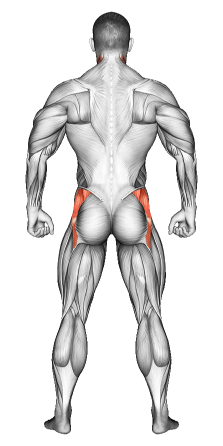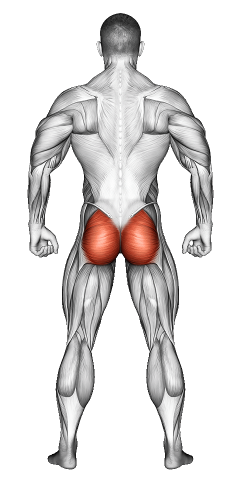Standing Resistance-Band Hip Abduction: Video Tutorial & Exercise Guide

Written By: Claude Michael
Updated: Oct 13, 2024
| Workout | Standing Resistance-Band Hip Abduction |
| Primary Muscle Group | Abductors |
| Secondary Muscle Group | Glutes |
| Equipment Required | Resistance Band |
| Force Type | Push |
| Mechanics | Isolation |
| Exercise Type | Strength |
| Difficulty | Intermediate |
Standing Resistance-Band Hip Abduction: Video Tutorial & Exercise Guide
- 1.Standing Resistance-Band Hip Abduction: Muscle Groups
- -1.1Primary Muscle Group
- -1.2Secondary Muscle Group
- 2.Standing Resistance-Band Hip Abduction: Step-by-Step Guide
- 3.Standing Resistance-Band Hip Abduction: Overview
- 4.Standing Resistance-Band Hip Abduction: Benefits
- 5.Standing Resistance-Band Hip Abduction: Pro Tips & Advanced Techniques
- 6.Standing Resistance-Band Hip Abduction: Progression Plan
- 7.Standing Resistance-Band Hip Abduction: Frequently Asked Questions (FAQs)
Secondary Muscles Group
Standing Resistance-Band Hip Abductions: Step-by-Step Guide
- Step 1: Place a resistance band around your ankles or just above your knees, depending on the tension level you want. Stand upright with your feet about hip-width apart.
- Step 2: Engage your core and stand tall, holding onto a wall or sturdy surface for balance if needed.
- Step 3: Shift your weight onto one leg, keeping it slightly bent, and lift your other leg directly out to the side. Keep the movement controlled and focus on using your outer hip and glute muscles.
- Step 4: Raise your leg as high as comfortable without tilting your torso. Pause for a moment at the top.
- Step 5: Slowly lower your leg back to the starting position, keeping tension in the band.
- Step 6: Repeat for the desired number of reps, then switch to the other leg. Make sure you maintain control and avoid fast, jerky movements.
Standing Resistance-Band Hip Abduction: Overview
The Standing Resistance-Band Hip Abduction is a simple yet highly effective exercise for targeting the gluteus medius and outer thighs. This move is perfect for strengthening the muscles that stabilize your hips, which is essential for improving balance, posture, and athletic performance. It's a great addition to your lower body routine and requires minimal equipment.
Standing Resistance-Band Hip Abductions: Benefits
This exercise focuses on strengthening the gluteus medius and minimus, which play a critical role in hip stability and balance. Strengthening these muscles helps prevent knee and hip injuries, improves athletic performance, and enhances lower body aesthetics by shaping the outer thighs. The added resistance from the band increases muscle activation without the need for heavy weights.
Standing Resistance-Band Hip Abduction: Pro Tips & Advanced Techniques
To maximize the benefits of this exercise, keep the movement slow and controlled. Focus on lifting with your hip muscles rather than relying on momentum. Keep your core engaged to avoid tilting your torso as you lift your leg. If you want to increase the difficulty, use a stronger resistance band or increase the number of reps.
Standing Resistance-Band Hip Abduction: Progression Plan
Beginner
Intermediate
Advanced
Standing Resistance-Band Hip Abduction: Frequently Asked Questions (FAQs)
What muscles do Standing Resistance-Band Hip Abductions target?
+This exercise mainly targets the gluteus medius and minimus, as well as the outer thighs (hip abductors). It also engages your core for stability.
How do I make this exercise more challenging?
+To increase the difficulty, use a stronger resistance band, perform more reps, or add a pause at the top of the movement to increase time under tension.
Can beginners do this exercise?
+Yes, beginners can start with a lighter resistance band and focus on maintaining balance and form. It’s a great exercise to introduce hip stability work.
How often should I do Standing Resistance-Band Hip Abductions?
+You can include this exercise 2-3 times per week in your lower body workout or glute activation routine for best results.
What common mistakes should I avoid?
+Avoid using momentum to lift your leg or allowing your torso to tilt. Focus on a slow, controlled movement with proper form to engage the correct muscles.
Share
Don’t Wish for It, Work for It – Join the FlexXP Newsletter Today!
Thank you for signing up for the FlexXP Newsletter!
This site is protected and the Google Privacy Policy and Terms of Service apply.

